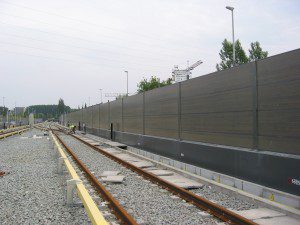
Just 12 months ago Campbelltown Council increased rates by a whopping 12 per cent.
But it says it hasn’t got any money to help some of its ratepayers in Ingleburn who need noise barriers erected between their homes and the railway line.
Instead it will ask the state government to carry out an assessment that’s a necessary part of the process before noise barriers can be erected.
A report to council recently said that a highly specialised assessment needs to be done first to gauge the effectiveness of a noise wall along the Glenfield to Macarthur rail corridor.
“Council currently has no funds set aside to undertake such an assessment,’’ the report said.
“Given this, council will look to work with staff from Transport for NSW to have the specialised assessment undertaken.”
Which means the affected residents will need to put up with the train noises for a little extra time.
Earlier this year a petition was tabled at council with 34 signatures of residents in Redfern Street, Gordon Avenue and James Street, Ingleburn, seeking council’s support in having noise barriers erected by the State Government along the rail corridor.
Council offered to write to the appropriate Minister and Department requesting the urgent installation of a noise barrier adjacent to the rail corridor along Redfern Road between Gordon Avenue and James Street, Ingleburn.
It also wrote to the local MP, one of its own councillors, Anoulack Chanthivong, the newly elected Member for Macquarie Fields, requesting his support in the matter.
The third part of council decision as to call for a report on the residents’ plight.
It was this report which was tabled recently and informed councillors that while it has yet to get a response from the government, Cr Chanthivong has offered his support.
“There is a strong body of evidence that the use of noise barriers is an effective method of abating transport noise,’’ the report said.
“The decibel scale (dBA) is used to represent noise (sound pressure level) and the overall noise is expressed in terms of dBA.
“Generally between 5dBA and 10dBA reduction in noise is achieved by noise barriers ranging from 2m to 6m in height.
“Noise barriers erected to a height that blocks the line of site between the source of the noise and the receiver of the noise would reduce noise by approximately 5dBA.
“A further reduction of 1 to 5dBA is generally achieved for every additional 1m height of the wall. The height of the noise barrier above the line of sight is a factor in determining how effectively the noise path is interrupted therefore the degree to which the noise is reduced at a nearby residential property.
“The distance of the property from the noise wall is also a factor for consideration such that where a noise wall is constructed, there will still be a noise impact (although lesser) from diffractive noise emanating from the top of the wall.
“Various styles of wall design and different types of materials also provide different noise reduction characteristics.
[social_quote duplicate=”no” align=”default”]“In order to determine the location of properties that are adversely impacted by noise generated from the railway corridor and those that may benefit from the erection of noise barriers, detailed analysis and noise modelling is required to be carried out,’’ the report said.[/social_quote]
“This analysis would include both a noise survey and a physical survey of the local area, with electronic noise loggers installed in various locations which would include the rail corridor and properties affected.’’



